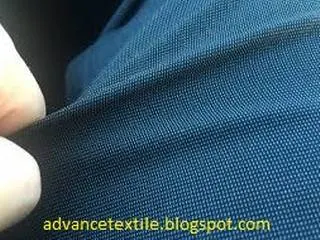Polyester
Polyester
is a special type of polymer that contains the ester functional group in the
main chain. It is a specific material, it refers to a type called polyethylene
terephthalate (PET). It contains naturally occurring chemicals such as tree
cuttings, as well as synthetics such as polybutyrate. Natural polyesters and a
few synthetics are biodegradable, but most synthetic polyesters are not. Polyester material is widely used in clothing.
It
is sometimes combined with natural fibers to create a fabric with blended
properties. Cotton-polyester blends must be strong, wrinkle, and tear-resistant
and reduce shrinkage. Man-made or synthetic fibers using polyester have higher
water, wind, and environmental resistance than fibers obtained from plants.
These are less fire-resistant and can melt when ignited.
Polyester dyeing process
In
the polyester dyeing process, scattered dyed polyester fibers can be considered
as a dye transfer process from liquid solvents like water to solid organic
solvents like fiber.
When
dyeing polyester, the scattered dyes are added to the water with a
surface-activating agent for an aqueous dispersion. The invisibility of
scattered pigments enables them to give up dye alcohols because they are more
numerous than organic fibers than inorganic dyed alcohols. With the application of
pigment heat (130 to 135 °C), alcohol increases the strength of the pigment
molecule and accelerates the dyeing color of polyester fibers. Heating the
pigment alcohol causes some amount of polyester fiber to swell and helps the
dye to enter the polyester polymer system.
Thus
the dye molecule takes place in the amorphous regions of the polyester fiber.
Once the polyester has taken place in the polymer system, the dye molecules are
held by the hydrogen bond and the van der Waals force.
The dye is taken in the following simultaneous steps: Isolation of individual
molecules into the water to disperse the dye at a solid level. This expansion
depends on the dispersion and solubility of the dyestuff and is aided by the
presence of dispersing agents and rising temperatures.
Synthesis
of dissolved dyes from polyester surface solutions. This dyestuff addition to
the polyester surface is influenced by the solubility of the dye bath dyes and
the polyester fiber. The splitting of the assorted dye from the surface of the
fiber inside the fibrous material towards the center. Under normal
circumstances, the rate of absorption is always higher than the rate of spread.
And it’s a step in managing polyester dyeing.
Recipe for polyester dyeing-
Dyestuff – 2%
(20-30g/liter) on the weight of the material
Carrier – 12 to 15g/liter
Dispersing Agent – 2 to 3g/liter
Acetic Acid – (Adding till pH-4)
Material: Liquor Ratio – 1:20
Temp – 130 °C
Carrier – 12 to 15g/liter
Dispersing Agent – 2 to 3g/liter
Acetic Acid – (Adding till pH-4)
Material: Liquor Ratio – 1:20
Temp – 130 °C










0 Comments